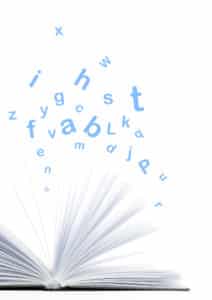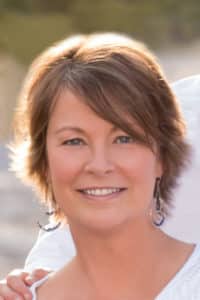
Menu
Finding ways to effectively teach science terminology can help your high school students grow as learners in ALL their classes. From a student’s perspective, science has lots of big, scary words. Full of “-isms” and “-ologies”, science vocabulary can be a limiting factor when it comes to understanding key concepts.
I hope these ideas make it easier for you to show your students the concepts behind the words. Here we go!
Before we get into the three tips, I want to mention the two basic rules or philosophies that govern my approach to teaching science terminology.
Break the words down into their parts. Always. Every time. This is certainly important the first time you introduce a key term such as photosynthesis – “to put together with light”. But, don’t stop there. Every time you say the word, say the meaning of the word or at least one prefix or suffix. Every time a student says “photosynthesis” ask another student what “photo” means and another student what “synthesis” means. Continue to reiterate these word parts as you explain details of the process.
This is a really fun vocabulary activity that my students always love! And, it includes a great example of how to break down a big, scary word. Science Vocabulary Activities

Help your students feel smart. Sometimes students’ unfamiliarity with science terminology can make them feel insecure about their intelligence or their understanding of science. This is NOT what we want. I think it’s important to clarify that terminology is just words and every aspect of life or area of study has its own set of terminology. Students will undoubtedly know lingo about sports, fashion, cars, surfing, art, etc. that you don’t know. You might even consider letting the students teach you some new words. But, be careful – ha! 🙂
Our goal is to make the big words have meaning; to connect the terminology to the concepts. Using complex words can certainly make people sound smart, but we really want is deeper understanding. Here’s a short story for you . . .
I worked in the English department for four years while I was in college. One day, I discovered that the head of the department was also the announcer for our football team. I told him that I didn’t realize that he knew so much about football. He said, “I don’t. But, I’m an English professor, so I sound like I know a lot about a lot of things.”
Okay, now for the teaching tips.
We often think of word walls as an elementary strategy and, honestly, it doesn’t seem like much of a strategy at all. But, posting words on a wall can be a very effective way to teach science terminology especially for struggling students or those who read below grade level. I make a separate card for any prefixes and suffixes used in the key terms, too.
All you have to do is post the key terms on the wall. Or a door or cabinet. Make them large enough for all students to read them from most areas in the classroom. Every time you or a student uses the word, refer to the wall so they get to SEE it. Or, if a student is searching for a word as they are speaking, give them a friendly nod in the right direction. The simple act of repeatedly pointing to the word as it comes up in class visually reinforces it and its spelling. You can also use it as a sort of word bank for activities, quizzes, classroom discussions, and questioning sessions.
Here are a few more ways I like to use word walls. Challenge students to choose two words and compare or contrast them. Ask students to create a graphic organizer using a certain number of words from the wall (see the next tip). Select one word and ask students to define it or list examples as a warm-up or exit pass. I really like this “Pass Around” lesson, posted previously, that requires absolutely NO PREP! And, THIS POST lists even more ways to use word walls in your classroom.
I love, love, love graphic organizers. Some of my favorites are the Frayer Model, K-W-L, and the good ‘ole Venn diagram. In my experience, graphic organizers are the easiest way to stimulate critical thinking and help students make connections between concepts. This is where the science terminology becomes meaningful words.
If you or your students are new to graphic organizers, I suggest starting with brainstorming or bubble maps. These styles allow a lot of freedom and can help your students just get something down on paper. Encourage them to share with each other and maybe even have small groups collaborate to produce one graphic organizer to show off to the class.
Once they are more comfortable, introduce the Venn diagram, KWL chart, flow charts, and more complex organizers. At first, you might need to fill in a few blanks or work through them together as a class. I also love the idea of letting them color their graphic organizers and add their own style.
If you need more inspiration or ideas on how to use graphic organizers, take a look at THESE. If you like them, use the form on the right side of this page to sign up for my newsletter and you will have access to a simpler version in my FREE resource library.
Now that students have SEEN the science terminology on the word wall, and THOUGHT about it in graphic organizers, it’s a good time to USE the terms in a fun way. Playing games in the classroom reduces pressure on students and gives them an opportunity to learn from each other.
All of the games I’ve listed below require a deck of vocabulary/definition cards. In my first few years of teaching, I made these myself on lined 3 x 5 cards with the chapter name or concept on the blank side of each card in the deck. Then, I wrote the key term on the lined side of one card and the definition on the lined side of another card to create a pair. So, if you have 25 key terms in the chapter, you’ll have a deck with 50 cards.
I used to make these cards while sitting in front of the TV in my early years of teaching. But, I suggest having student volunteers or early finishers make the cards for you. You can also laminate them for years of use. You’ll need a deck for each group of 3 to 4 students. Secure the decks with rubber bands and store them in a shoebox.
I’m sure you and most of your students are familiar with the rules for these games, so I’ll just hit the highlights here. If you need more details on how to play these, they’re easy to find online.
Here are some vocabulary card games I sell in my TpT store. I don’t do “free time” so I keep these on hand for times when I, or my students, need a little brain break:
I have seen the fear of big words, or macrologophobia, in the eyes of my students many times over the years. I hope you’re able to use these ideas to keep them from shutting down on you. As Science teachers, we want our students to learn all the awesome science things, and not be intimidated by the big, scary words.
I’d love to hear your ideas for teaching science terminology, so please share them in the comments below.
Carla

Sign Up for the Science Island Newsletter and Free Resource Library.
Then check your email to confirm your subscription.